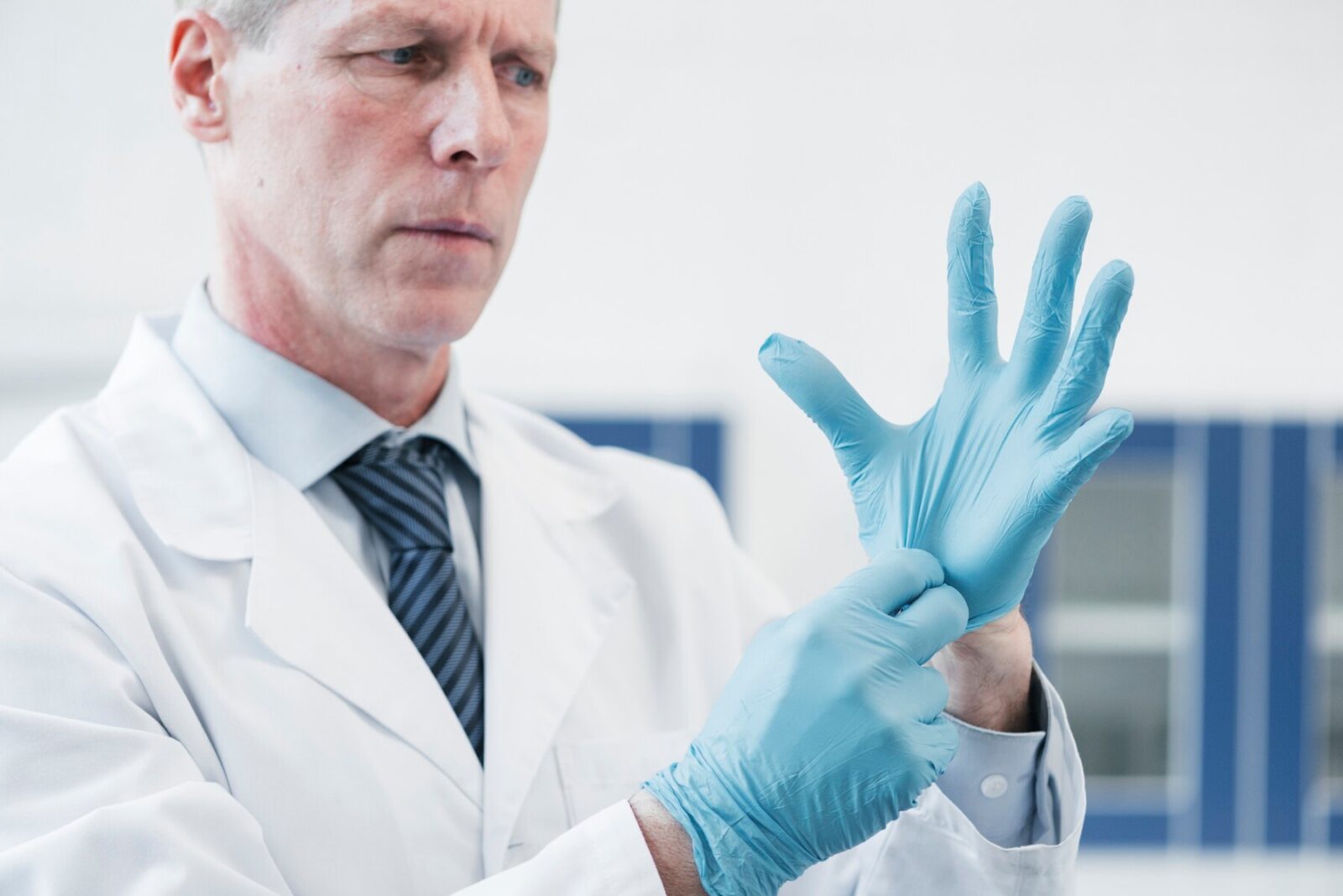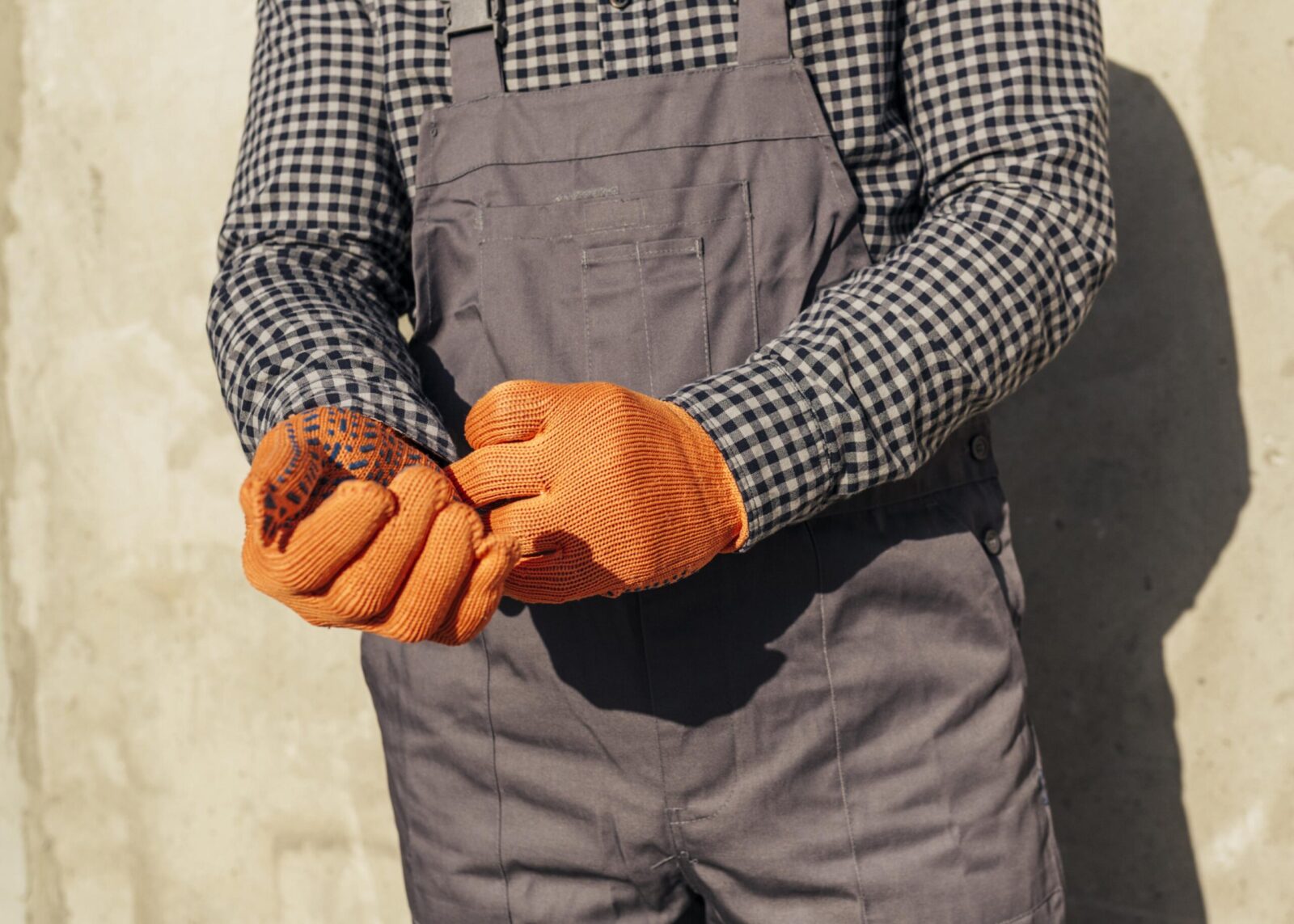
Arc Flash Gloves: Selecting the Right Protection
Choosing the right Arc Flash Gloves is key to ensuring your safety in high-risk environments like electrical maintenance or construction....

Get 20€ off on your first order!
Selecting the right sterile gloves for pharmaceuticals is essential to ensuring product integrity, compliance, and safety. This guide equips you with everything you need to make informed decisions, from material selection to compliance standards and fit.
We’re here not only to solve today’s challenges but also to prepare you for tomorrow. Whether it’s handling chemicals or meeting cleanroom protocols, explore our curated range of Cleanroom & Sterile Gloves, and count on us to support your safety and success.
For a broader overview, refer to How to Choose the Right Cleanroom & Sterile Gloves – A Buyer’s Guide.

The material of sterile gloves significantly impacts their performance and suitability for pharmaceutical use. Common materials include:
When selecting materials, consider the specific requirements of your pharmaceutical processes, such as resistance to chemicals or sensitivity to delicate tasks.
Pharmaceutical sterile gloves must meet stringent cleanroom classifications. Check for certifications like ISO 14644 (cleanroom standards) and ASTM D6978 for handling Challenging drugs. ISO 14644 ensures compliance with cleanroom cleanliness standards, while ASTM D6978 provides guidelines for gloves suitable for handling challenging drugs.
For more details, you can refer to the Wikipedia or ASTM documentation. Always verify that gloves are rated for your cleanroom’s specific classification.
Sterile gloves are sterilized using methods such as gamma irradiation or ethylene oxide (ETO). Gamma-sterilized gloves offer a higher level of sterility assurance, making them ideal for Essential pharmaceutical applications. This method ensures uniform sterility by eliminating microorganisms through ionizing radiation. Compared to ethylene oxide (ETO) sterilization, gamma irradiation is faster and leaves no chemical residues, making it particularly suitable for pharmaceutical environments.
Ill-fitting gloves can compromise both safety and comfort. Refer to the sizing chart provided by manufacturers and ensure a snug fit for optimal dexterity. European glove sizes typically follow EN 420 standards, ensuring consistency in sizing. For more information about these standards, you can visit the official EN 420 documentation.
| Hand Circumference (cm) | Glove Size |
| 16–19 | XS |
| 19–22 | S |
| 22–25 | M |
| 25–28 | L |
| 28–31 | XL |
Powder-free gloves are Strongly recommended for pharmaceutical environments to avoid contamination risks. Ensure that your gloves are labeled as powder-free and comply with European PPE Regulation 2016/425.
Sterile gloves should be replaced:
For example, in pharmaceutical aseptic processes, gloves should typically be replaced after 2 hours of continuous use To ensure continued sterility. Always adhere to your facility’s SOPs (Standard Operating Procedures) for glove replacement, which may include specific intervals and conditions based on your operational requirements.
To complement your sterile gloves, consider these related products:
For further guidance, explore these related articles:
We hope this guide has provided valuable insights into choosing the right sterile gloves for pharmaceutical applications. From understanding material options to ensuring compliance with cleanroom standards, each factor plays a vital role in maintaining sterility, safety, and regulatory adherence. Explore our curated range of Cleanroom & Sterile Gloves, featuring trusted brands and industry-leading options tailored to your specific needs.
Have questions or need personalized advice? Don’t hesitate to reach out—our team is here to support you in finding the perfect gloves for your operations, ensuring confidence and quality in every purchase.
– The Droppe Team
The thickness of sterile gloves affects both protection and tactile sensitivity. Thicker gloves provide better chemical and puncture resistance, while thinner gloves offer superior dexterity for delicate tasks. Consider the specific needs of your pharmaceutical application when choosing the appropriate thickness.
Sterile gloves are typically made from materials like nitrile, vinyl, or latex, which are not widely recyclable due to contamination risks in pharmaceutical environments. However, some manufacturers offer recycling programs for used gloves, ensuring proper disposal and environmental compliance.
Store sterile gloves in a cool, dry place away from direct sunlight, heat sources, and chemicals. Always keep them in their original packaging until use to maintain sterility and ensure sterility.
The shelf life of sterile gloves varies by manufacturer and sterilization method. Typically, gloves have a shelf life of 3-5 years when stored under optimal conditions. Always check the expiration date printed on the packaging.
No, sterile gloves are designed for single use. Reusing gloves May impact sterility and hygiene levels, which is not recommended in pharmaceutical environments.
When handling challenging drugs, select gloves that meet ASTM D6978 standards for resistance to chemotherapy drugs. Nitrile gloves are often preferred due to their superior chemical resistance and durability.
Yes, nitrile and vinyl gloves are excellent alternatives for individuals with latex allergies. They provide similar or superior performance in terms of chemical resistance and durability without triggering allergic reactions.
If a glove tears during use, immediately remove and dispose of it according to your facility’s SOPs. Wash your hands thoroughly and put on a new pair of sterile gloves to maintain sterility.
To ensure compliance, verify that the gloves are certified to meet relevant standards such as EN ISO 374-5:2016, ISO 14644, and the European PPE Regulation 2016/425. Always purchase gloves from reputable suppliers with documented compliance.
Cleanroom gloves are specifically designed for environments with stringent contamination control, such as ISO Class 5 or Class 6 cleanrooms. They are tested for low particle shedding and meet additional cleanroom-specific standards. General sterile gloves may not meet these stringent requirements.
Thank you! You've signed up for our newsletter.



















Choosing the right Arc Flash Gloves is key to ensuring your safety in high-risk environments like electrical maintenance or construction....

Choosing the right Rubber Insulating Gloves is essential for safety in electrical work, but with so many options, it can...

Are you looking for the right electrical insulating gloves to ensure your safety? This guide will help you understand the...

Choosing the right Arc Flash Gloves is key to ensuring your safety in high-risk environments like electrical maintenance or construction....

Choosing the right Rubber Insulating Gloves is essential for safety in electrical work, but with so many options, it can...

Are you looking for the right electrical insulating gloves to ensure your safety? This guide will help you understand the...
Get 20€ off on your first order!
Save 30% by buying directly from brands, and get an extra 10€ off orders over €100
Save 30% by buying directly form brands, and get an extra 10€ off orders over €100